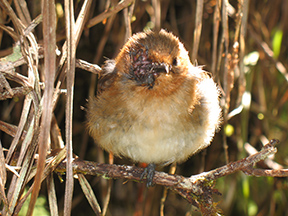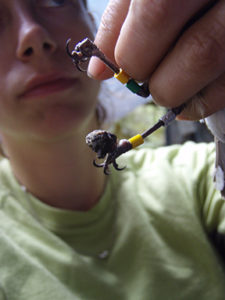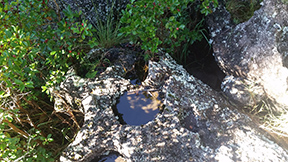 Mosquitos and Avian Diseases
Mosquitos and Avian Diseases
Introduced house mosquitoes (Culex quinquefasciatus) and the diseases they carry have caused a number of extinctions, and continue to contribute to population declines and range contractions of native forest birds. Having evolved in the absence of many avian diseases, many native forest bird species are highly susceptible to them. The two major disease threats are avian malaria and avian poxvirus (Avipoxvirus). Avian malaria is the avian equivalent to human malaria. It results when a blood-borne parasite, Plasmodium relictum, is transmitted from infected birds to healthy birds by mosquitoes under suitably (warm) temperatures. Once infected, many birds die. Thus, the introduction of mosquitoes made it possible for native birds to become infected, given that a reservoir of disease was present.
Avian poxvirus is a virus which also can be transmitted by mosquitoes, although transmission can occur via bird-bird contact or contact with infected perches. Once infected, native and non-native birds alike grow lesions on exposed areas of the body, such as the beak and legs. These lesions often cause the loss of toes and beak deformities, and eventually death.
In recent years, KFBRP has worked with collaborators to publish two papers regarding increased prevalence of both mosquitoes and avian malaria on the Alaka’i Plateau (Atkinson et al., 2014 and Glad and Crampton, 2015). Mosquitoes are the vector for two devastating disease, avian malaria and avian pox; formerly, the cool temperatures of the Alaka’i Plateau put the brake on transmission of these diseases. These changes appear to be driven at least in part by warmer temperatures and decreased frequency of flooding events, which allow mosquitoes sufficient time to complete their life cycle on the plateau.



